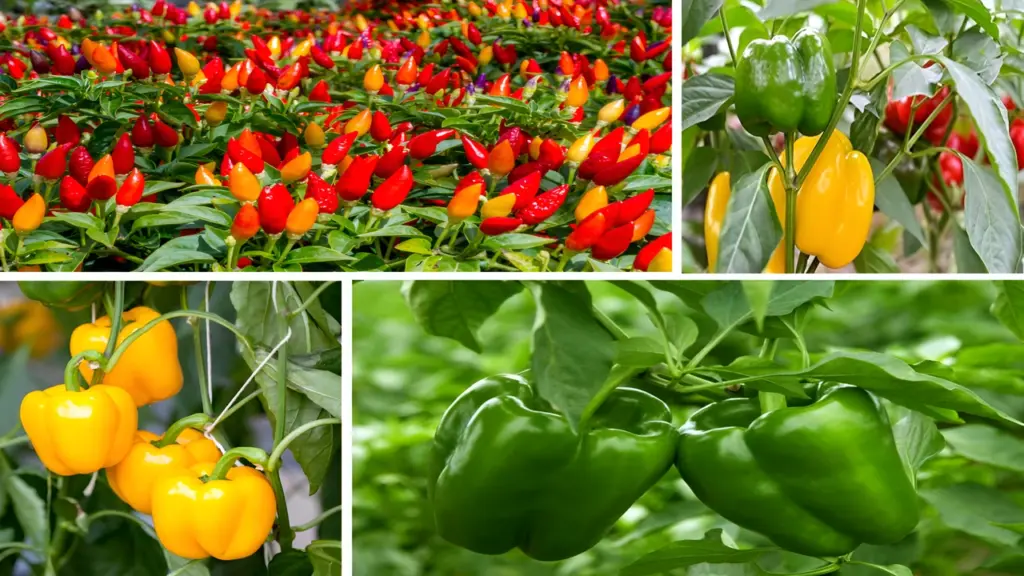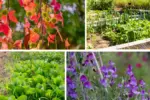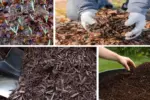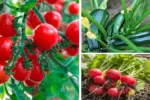Join on WhatsApp
Get the latest updates directly on WhatsApp – motivation, news & more!
Peppers are one of the easiest and most satisfying crops to grow at home. Whether you’re a fan of sweet bell peppers, zesty jalapeños, or fiery habaneros, growing them on your patio or in your backyard lets you enjoy vibrant flavors right from your garden. Even better? With a little planning, you can stretch your harvest through every season — yes, even winter!
This guide will walk you through how to grow peppers in containers and garden beds outdoors, with tips to keep your harvest going all year long.

Start with the Right Pepper Varieties
Not all peppers are created equal when it comes to growing outdoors in containers or small spaces. Choose varieties that match your local climate and available space.
- Compact bell peppers like ‘Lunchbox’ or ‘Mini Belle’ are great for pots.
- Hot peppers such as ‘Jalapeño’, ‘Cayenne’, or ‘Serrano’ love warm weather and are very productive.
- Perennial varieties like ‘Aji Dulce’ or ‘Tabasco’ can live for years in frost-free zones or containers you can move indoors.
If your winters are mild, certain varieties may even overwinter in the garden with protection. Otherwise, growing in containers gives you flexibility to bring them indoors when frost threatens.
Choose the Right Containers or Beds
For patios and small backyards, containers are a perfect solution.
- Use pots at least 12 inches deep for smaller varieties and 16–18 inches for larger ones.
- Ensure good drainage by selecting containers with holes and using a light, well-draining soil mix. Avoid using garden soil in pots — it compacts too much.
- Raised beds in the backyard work wonderfully too, especially if your soil is poor or you want better drainage.
Location Is Everything: Maximize Sun Exposure
Peppers love sun. In fact, they thrive with 6–8 hours of direct sunlight per day.
- On patios, place containers in the sunniest spot available — south-facing is ideal.
- If shadows from fences or buildings limit your sun time, consider rolling plant stands to move your pots during the day.
- In cooler seasons, even a little extra warmth from a wall or reflective surface can help extend the growing season.
Keep Your Soil Healthy and Nutrient-Rich
Healthy soil means healthy peppers.
- Mix compost or aged manure into your soil before planting.
- Use a balanced slow-release fertilizer early in the season, and switch to a bloom-boosting formula (higher in phosphorus and potassium) once flowers form.
- Top-dress containers with fresh compost mid-season to refresh nutrients.
Water Deeply — But Don’t Drown Them
Peppers don’t like wet feet, but they do need regular moisture.
- Water when the top 1–2 inches of soil feel dry.
- In containers, check more often — pots dry out faster, especially in summer.
- Use mulch to reduce evaporation and keep soil temperatures stable.
- Always water early in the day to allow foliage to dry before nightfall, reducing disease risks.
Support Your Plants as They Grow
Even compact varieties benefit from some support.
- Install small cages or bamboo stakes early to avoid disturbing roots later.
- As fruits develop, their weight can pull branches down. Proper support prevents breakage and increases airflow.
Pollination Outdoors: Nature’s Got You Covered
One benefit of outdoor growing is that you don’t need to hand-pollinate. Bees, butterflies, and even wind will do the work for you.
To attract pollinators:
- Plant flowers nearby like marigolds, lavender, or basil.
- Avoid pesticides, especially during flowering.
Watch for Pests — and Act Early
While peppers are relatively low-maintenance, pests like aphids, whiteflies, and hornworms can occasionally show up.
- Spray plants with water or insecticidal soap at first signs of trouble.
- Introduce beneficial insects like ladybugs to control pest populations naturally.
- Practice good garden hygiene — clear fallen leaves, rotate crops, and keep plants spaced for airflow.
Extend Your Harvest into the Cooler Months
Here’s how to keep your pepper production going beyond the summer:
1. Overwinter Container Plants
- Before the first frost, bring potted peppers indoors to a sunny window or under grow lights.
- Cut them back to conserve energy.
- Water sparingly over winter, then reintroduce them outdoors in spring.
2. Use Row Covers or Cold Frames
- In backyard beds, floating row covers can add warmth and protection during chilly nights.
- Cold frames or small greenhouses can extend your growing season by several weeks.
3. Succession Planting
- Plant new seedlings every 6–8 weeks during the growing season.
- This staggered approach means you’ll always have peppers in various stages of growth.
Harvest Regularly for More Peppers
Don’t wait too long to pick — the more you harvest, the more your plants produce.
- For mild peppers, you can harvest them green or let them ripen to red, orange, or yellow for maximum sweetness.
- Hot peppers intensify in heat as they mature, so pick according to your taste.
- Use scissors or pruners to avoid damaging stems.
Final Thoughts: Your Year-Round Pepper Paradise
Growing peppers on your patio or in your backyard is more than just a gardening project — it’s a flavorful lifestyle choice. With thoughtful planning, the right varieties, and a bit of seasonal strategy, you can enjoy fresh, homegrown peppers through every month of the year.
From summer salsas to winter stir-fries, your pepper plants can deliver a constant supply of color, crunch, and heat — right from your own backyard.




